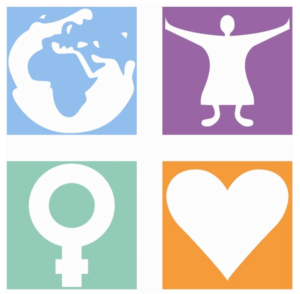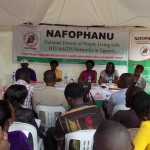The World Health Organization estimates that there were a total of 38.4 million people living with HIV (PLHIV) in 2021, of which over half (19.7 million) were women. Two-thirds of PLHIV (25.6 million) are in the African region. In 2021, 1.5 million people acquired HIV, out of which 640,000 were women above 15 years old, just slightly below the number for men (680,000). Every day, 4,000 people, including 1,100 young people aged 15 to 24, become infected with HIV.
It was also reported that an adolescent girl or young woman was newly infected with HIV every two minutes. The COVID-19 pandemic caused additional challenges, such as disruptions to key HIV treatment and prevention services, millions of girls dropping out of school, and a spike in teenage pregnancies and gender-based violence (UNAIDS Report (In danger)).
Adolescent girls and young women (AGYW) are three times more likely to acquire HIV than adolescent boys and young men of the same age group in sub-Saharan Africa.
The world has made incredible strides towards ending AIDS over the years; however, the stakes remain high for women and AGYW, especially in sub-Saharan Africa, which remains unacceptable. Despite the introduction of Option B+ since 2010 and sustaining maternal ART coverage at 96% for more than 5 years, vertical transmission still gives rise to about 14% of all new HIV infections (Spectrum estimates, 2022).
Mothers who seroconvert later during pregnancy and breastfeeding, and those abandoning treatment are the leading sources of HIV transmission to babies. A good percentage of pregnant and lactating women were not started on ART despite 96% maternal ART coverage, and in addition, there are increasing percentages of babies exposed to HIV who seroconvert after their 1st EID negative test.
We see progress in the availability of HIV prevention and treatment services, but women and girls remain at high risk of HIV in many settings, especially in Africa. No single HIV prevention method has met the needs of all people at risk, including women and girls. Therefore, a range of options is needed for individuals to protect themselves and to curb the HIV epidemic.
Existing HIV prevention interventions have not done enough to stop HIV infections among girls and women. Since November 2020, the Dapivirine Vaginal Ring (DVR) has been included on WHO’s prequalification list of medicines, and the same with Cabotegravir Long-Acting (CAB-LA).
However, how many countries have taken the necessary steps towards having the two as options for those who need them? Women urgently need new prevention choices that meet their diverse needs, which can change throughout their lives.
To end AIDS by 2030, prioritizing CHOICE for girls and women is fundamental. Although access to daily oral PrEP is increasing around the world, a daily pill is not a suitable or desirable prevention method for everyone. Therefore, it is important to provide other HIV prevention choices. PrEP is one of the available options, but it also has its own challenges.
Experience has shown that the introduction of oral PrEP in many countries has revealed that women face unique challenges when it comes to adhering to a daily pill due to the daily pill burden which most clients feel is unbearable, gender inequity, social norms, and other structural barriers. To reach a win-win situation, countries must expand HIV prevention options to meet women’s needs in their diversity.
In conclusion, closing the gaps that hinder women and girls’ access to HIV prevention and treatment services is a win-win for the global HIV response. Governments, communities, and civil society organizations must work together to prioritize women and girls’ needs to achieve the 2030 global goal of ending AIDS.
Author is Dorothy Namutamba, the Director Programmes & Advocacy, ICWEA.



